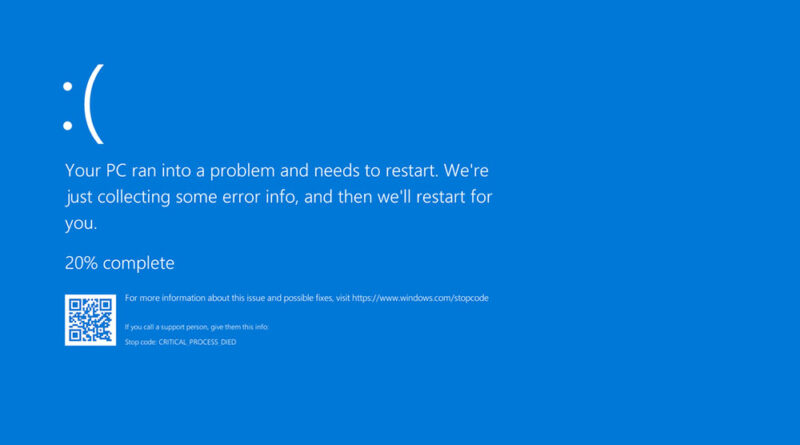Microsoft Retires Iconic Blue Screen of Death in Windows 11 Update
Microsoft is saying goodbye to the iconic “Blue Screen of Death” (BSOD), a notorious feature familiar to nearly all Windows users. In its forthcoming update for Windows 11 (version 24H2), the company is replacing the traditional blue error display with a simplified black screen.

Historically recognized by its bright blue background, sad emoticon, and straightforward error messaging, the BSOD has long symbolized Windows’ most critical system failures. However, according to recent previews, Microsoft is moving towards a more subdued appearance, removing not only the characteristic blue background but also the sad face and QR code that were used since Windows 10 to guide users toward troubleshooting solutions.
The updated error screen, as observed by Windows Latest, now succinctly states, “Your device ran into a problem and needs to restart,” using the more universal term “device” instead of “PC,” to encompass a broader range of hardware beyond desktops and laptops. The detailed crash reason and error code remain, though they’re displayed less prominently at the bottom of the screen.
Microsoft reportedly considered redesigning the BSOD during early Windows 11 development but initially shelved those changes. Now, these alterations appear poised for official release, already appearing in preview builds for Windows Insiders (who experience the crash screen in green rather than black).
The motive behind this dramatic visual shift remains unclear. Speculation suggests that Microsoft aims to distance itself from the BSOD’s historical association with instability and problematic updates. Yet, some users might find the new black-and-white aesthetic even more somber and stark than the original.
The exact timing for rolling out this redesigned system error screen to the general public remains unannounced. It isn’t currently listed on Microsoft’s official Windows 11 roadmap but may debut in an upcoming Patch Tuesday update. While some users may welcome a fresh approach, the classic blue screen—despite its frustrations—will undoubtedly be missed as an iconic part of the Windows experience.

